
电化学与能源科学(英文)(eScience) 万方知网目次维普目次
- 科核
- 主管单位:
教育部
- 主办单位:
南开大学
- 国际刊号:
2667-1417
- 国内刊号:
12-1468/O6
- 学科分类:
- 字数:
16000-52000
- 有无基金:
/有基金 100.0%
- 周期:
CN外文-双月刊
- 特殊属性:
外文期刊
- 电话:
- 邮箱:
escience@nankai.edu.cn(202306期)
- 复合因子:
0
- 综合因子:
0
- 收录:
万方,知网目次,维普目次
- 级别:
科核
期刊简介
《电化学与能源科学》期刊已被查看: 次
更新频次
高频栏目:
PERSPECTIVE-100%-期平均发文量1篇
REVIEWS-100%-期平均发文量3篇
RESEARCH PAPERS-100%-期平均发文量4篇
中频栏目:
COMMUNICATION-50.0%-期平均发文量1篇
单位占比
其他-100.0%一作占比
/有基金-100.0%投稿指南
1、投稿方式:在线投稿。
2、刊内网址:(202306期)
https://www.sciencedirect.com/journal/escience
http://www.keaipublishing.com/en/journals/escience
3、投稿系统:https://www.editorialmanager.com/esci
4、刊内邮箱:escience@nankai.edu.cn
5、出刊日期:双月刊,逢双月出版。
2024年5月7日星期二
《电化学与能源科学(英文)》(eScience)创刊
【微信公众号信息】
2021年,南开大学与科爱合作,创办英文学术期刊eScience(国际刊号ISSN:2667-1417)(简称《e科学》),主管单位为教育部。
该刊获国家新闻出版署批准(国新出审〔2020〕340号,国内统一连续出版物号CN12-1468/O6,中文刊名《电化学与能源科学(英文)》。
eScience 中的e为能源、电化学、电子学、环境等英文首字母,致力于发表相关领域及其交叉学科具有原创性、重要性和普适性的最新研究成果。eScience 成功入选2020年度中国科技期刊卓越行动计划高起点新刊项目。
eScience “立足中国,拥抱世界,引领未来”,定位为具有广泛影响力的能源电化学领域国际顶级学术期刊。eScience 将提升国际学术影响力,服务科技强国建设,助力“碳达峰”和“碳中和”国家重大能源战略。
eScience 初期采取钻石开放获取出版模式,对作者和读者均免费,是您可信赖的发表平台。
主页链接:
https://www.sciencedirect.com/journal/escience
欢迎大家关注与投稿!
期刊将执行快速响应、公正严格、高标准的稿件评审制度。
投稿范围
期刊主题涵盖但并不仅限于以下领域:
电池、燃料电池、太阳能/氢能等可再生能源、光/电催化、碳中和、电子器件、电容器、电分析、热电/压电、生物电、电化学机理与表征、能源政策和安全。
稿件类型
Article(全文)
Communication(通讯)
Review(综述)
Perspective(观点)
News & Views(新闻&视角)
《电化学与能源科学(英文)》作者指南
【官网信息】
Guide for Authors
INTRODUCTION
Types of paper
Contributions falling into the following categories will be considered for publication.
Article
An Article is a substantial, novel research study of high quality and general interest to the energy, electrochemistry, electronics or environment community. As a guideline, Articles will be limited to 3000 words of main text (excluding the abstract, methods section, references, tables and figure legends), and no more than 8 display items (figures and tables). Articles allow up to 50 references (excluding those cited exclusively in methods). The abstract should be no more than 150 words and is unreferenced; it contains a brief account of the background and rationale of the work, followed by a statement of the main conclusions introduced by the phrase “Here we show” or some equivalent. The introduction should be up to 500 words of referenced text expands on the background to the work, followed by a concise, focused account of the findings. The main text should be divided by succinct topical headings of no more than 60 characters (including spaces) to aid readers. Articles may be accompanied by Supplementary Information and will be subject to rigorous peer review by experts on the subject matter. More details can be found from the manuscript template.
Communication
Communication presents highly influential findings of immediate interest to the broader energy, electrochemistry, electronics or environment community. They are distinct from Articles-Communications are more concise and, above all else, they are evaluated primarily on the importance and technical validity of the findings. Communications must highlight the significance and rigor of the research so the potential scientific impact is obvious to the broad and scale-spanning readership of eScience.
A typical Communication will be limited to 2500 words of text, and no more than four display items (figures and tables). Additional items and details may be published online as Supplemental Information. Communications will be subject to rigorous peer review by experts on the subject matter.
Review
A Review is an authoritative, balanced survey of recent developments in a research field. Although Reviews should be recognized as scholarly by specialists in the field, they should be written with a view to informing non-specialist readers. Thus, Reviews should be presented using straightforward prose, avoiding excessive jargon and technical detail.
Reviews should be no more than 8,000 words long and typically include no more than 10 display items (figures, tables or boxes). As a guideline, Reviews allow up to 120 references; citations should be selective. Footnotes are not used. The scope of a Review should be broad enough that it is not dominated by the work of a single research institution, and particularly not by the authors' own work. Reviews are always peer reviewed to ensure factual accuracy, appropriate citations and scholarly balance.
Perspective
A Perspective is intended to provide a forum for authors to discuss models and ideas from a personal viewpoint. They are more forward looking and/or speculative than Reviews and may take a narrower field of view. They may be opinionated but should remain balanced and are intended to stimulate discussion and new approaches. Perspectives may also advocate a controversial position or present a speculative hypothesis. Two articles advocating opposite sides in a research controversy are normally published as Perspectives.
Perspectives should not normally exceed 3,000 words. As a guideline, Perspectives allow up to 50 references; citations should be selective. Perspectives should include no more than 4 display items (figures, tables and/or boxes). As with Reviews, many Perspectives are invited by the editors, so it is advisable to send a pre-submission enquiry including a synopsis before preparing a manuscript for formal submission.
Perspectives are always peer reviewed and edited by the editors in consultation with the author.
News & Views
News & Views articles inform readers about the latest advances in the energy, electrochemistry, electronics or environment community field, as reported in recently published papers (in eScience or elsewhere) or at scientific meetings. Unsolicited contributions will not normally be considered, although prospective authors are welcome to make proposals. News & Views articles are not peer reviewed, but undergo editing in consultation with the author. News & Views articles should not normally exceed 1,000 words. As a guideline, Perspectives allow up to 5 references; citations should be selective.
Submission checklist
You can use this list to carry out a final check of your submission before you send it to the journal for review. Please check the relevant section in this Guide for Authors for more details. Ensure that the following items are present:
One author has been designated as the corresponding author with contact details:
E-mail address
Full postal address
All necessary files have been uploaded:
Include keywords
All figures (include relevant captions)
All tables (including titles, description, footnotes)
Ensure all figure and table citations in the text match the files provided
Indicate clearly if color should be used for any figures in print Graphical Abstracts / Highlights files (where applicable) Supplemental files (where applicable)
Further considerations
Manuscript has been ‘spell checked’ and ‘grammar checked’
All references mentioned in the Reference List are cited in the text, and vice versa
Permission has been obtained for use of copyrighted material from other sources (including the Internet)
A competing interest statement is provided, even if the authors have no competing interests to declare
Journal policies detailed in this guide have been reviewed
Referee suggestions and contact details provided, based on journal requirements
The Journal publishes only invited reviews presenting a detailed, critical summary of current research findings on a particular topic or area of research. If you are interested in writing a review article for the journal, please get in touch with the Editor in Chief (nanoen@elsevier.com) detailing the proposed focus of your review article alongside a recent CV and summary of your accomplishments in the field.
For any further information please visit our customer support site at http://support.elsevier.com.
BEFORE YOU BEGIN
Ethics in Publishing
For information on Ethics in Publishing and Ethical guidelines for journal publication see http://www.elsevier.com/publishingethics and http://www.elsevier.com/ethicalguidelines.
……
更多详情:
http://www.keaipublishing.com/en/journals/escience/guide-for-authors/
上一篇:石窟寺研究(集刊)下一篇:春秋學研究(春秋学研究)(集刊)
《电化学与能源科学》同类化学期刊
-
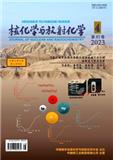
核化学与放射化学
北核,CSCD,科核,高T2
CN中文-双月刊影响因子0.618
-
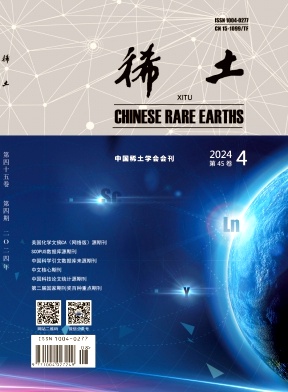
稀土
北核,科核,CSCD扩,武A-,高T2
CN中文-双月刊影响因子1.041
-
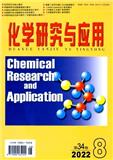
化学研究与应用
北核,科核,武B+
CN中文-月刊影响因子0.911
-
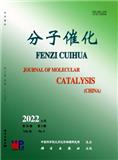
分子催化(中英文)
北核,科核,CSCD扩,武A
CN中文-双月刊影响因子1.802
-
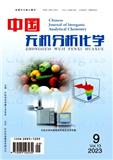
中国无机分析化学(原:中国无机分析化学文摘)
北核,高T3,CACJ-权威,武B+
CN中文-月刊影响因子1.591
-
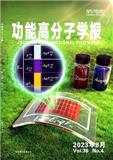
功能高分子学报
北核,CSCD,科核,高T2,武B+
CN中文-双月刊影响因子1.206
-

质谱学报
北核,CSCD,科核,高T2,EI(中国2024),武B+
CN中文-双月刊影响因子1.348
-
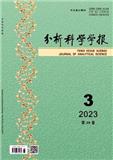
分析科学学报
北核,科核,CSCD扩,武B+
CN中文-双月刊影响因子1.227
常见问题
-
电化学与能源科学杂志社官网、联系方式是什么?
电化学与能源科学杂志社官网:https://www.keaipublishing.com/en/journals/escience
投稿网址:https://www.editorialmanager.com/esci
投稿邮箱:escience@nankai.edu.cn(202306期) -
电化学与能源科学杂志是核心期刊么?
电化学与能源科学是核心期刊,级别是:科核, 是:化学分类下的万方,知网目次,维普目次收录的期刊。
-
请问你们是电化学与能源科学杂志社吗?
我们不是《电化学与能源科学》杂志社。本站主要从事期刊信息展示与期刊推荐,不是任何杂志官网,直投稿件请联系杂志社。本站仅提供免费的学术指导、论文辅导、期刊投稿信息整理收集服务。
-
你们指导服务后可以保证文章被发表吗?
期刊发表的成功与否,主要取决于文章内容的质量。编辑老师会根据研究领域、创新性等多因素进行考量。我们会帮助您理解期刊的发表要求,助力提升发表几率,从而增加发表的机会。
-
晋级论文能否在报纸上发表?
在学术界,论文的发表往往被视为研究者职业发展的重要一环。晋级论文,即为了获得更高职称或学术地位而撰写的学术论文,通常需在专业期刊上发表。然而,许多人可能会问
